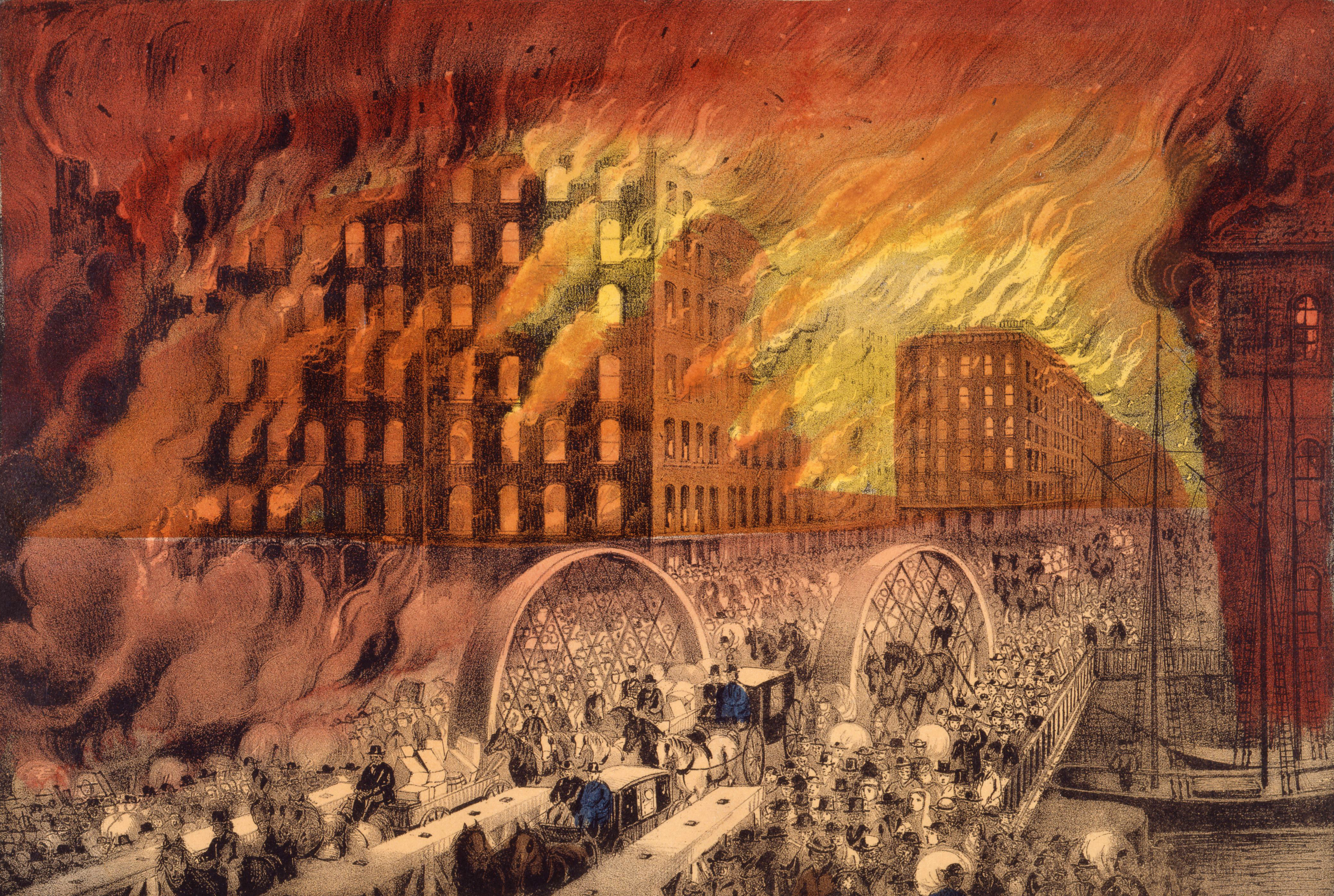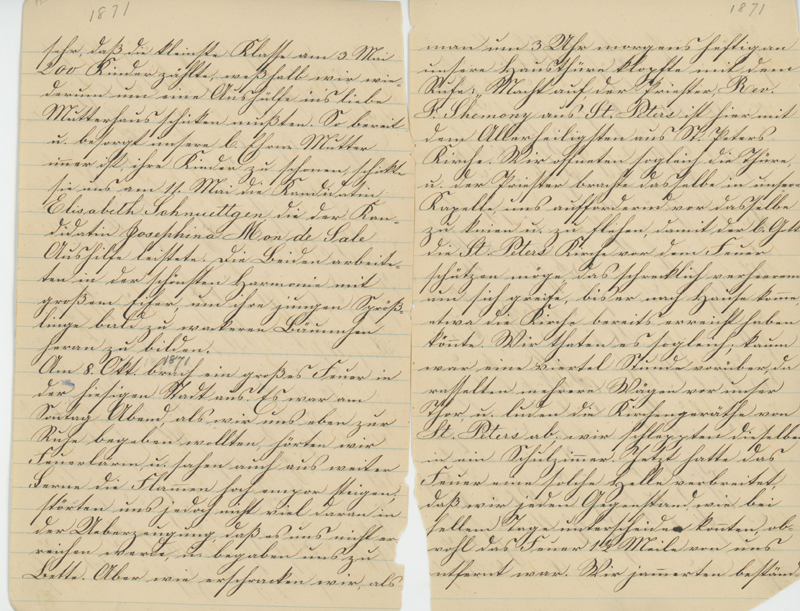
Artist’s rendering of The Great Chicago Fire, by Currier and Ives. (United States public domain image)
SSND and the Great Chicago Fire, Part I
On the night of Oct. 8, 1871, a fire was started in the O’Leary barn on Chicago’s west side. The fire quickly spread and by the morning of October 10, roughly one-third of the city lay in ruins. The fire destroyed almost 18,000 buildings, left 100,000 people homeless and caused the death of about 300 people.
In 1871, the School Sisters of Notre Dame staffed three parish schools in Chicago: St. Peter, St. Anthony and St. Michael. The schools were located in different parts of the city, but each was affected by the fire. The chronicles written by Sisters who lived through the event provide graphic details about the fear and devastation of those two days.
St. Peter
On the night of October 8, the Sisters at St. Peter’s heard the fire alarms, but since they were not in immediate danger, they went to bed. However, the fire spread quickly and by 2 a.m. the fire was only a block from the convent. The unnamed Sister who wrote the chronicle reported that about “2 o’clock the sky was enveloped in flames. The wind blew the flames above the houses to our sacristy. As I saw the danger, I awakened the Sisters who were peacefully sleeping.”
A half-hour later the priest from St. Peter’s arrived and told them they were in danger and needed to pack their belongings. As they prepared to leave, the Sisters “sprinkled the rooms with holy water and prayed, ‘Oh, Lord, protect our church, our convent, and our school, but if it be your Will to have them destroyed by fire, may it redound to your greater honor.’” The fire was closing in – it was about 80 steps west of them, 100 steps north and 2 blocks east – but the winds shifted and the fire moved north, sparing St. Peter’s.
The Sister who wrote the chronicle wrote of the devastation: “The greatest misery was to see people fleeing with their packs on their backs…We could see the children wandering the streets with their younger brothers and sisters half dressed. They lost their parents in the crowd and came to us for help. They found their parents only on Monday. We could not sleep nights for fear of danger and we were ready to depart at any time. Our entire city was in turmoil.”
The Sisters opened the school to those displaced by the fire. Despite the chaos, the school reopened eight days after the fire started.
St. Anthony
The Sisters at St. Anthony also heard the fire alarms, but convinced the fire would not reach them, they went to bed. At 3 a.m. they were awoken by a loud knocking at the front door. The priest for St. Peter’s arrived carrying the Blessed Sacrament and invited the Sisters “to kneel before it and to pray that God might protect St. Peter’s Church from the fire, which was now raging in all directions, until he reached home.” Shortly thereafter, a wagon carrying items from St. Peter’s arrived. The fire was a mile and a half away, but was so intense that the Sisters at St. Anthony’s could see everything clearly.

St. Anthony Chronicle, 1871
St. Anthony’s was not endangered by the fire, but they “suffered a great lack of water because the waterworks were destroyed already on the first day, and so there was no water to be had except lake water which was not very tasty.” The Sisters at St. Anthony’s provided food and clothing to those affected by the fire. The Sister writing the chronicle reported that they “saw the rich and well-to-do people, who were worth thousands of dollars before the fire, come and ask for bread and a little piece of meat. Even the hardest heart had to be moved to pity.”
Part II: St. Michael’s Church did not fare as well as St. Anthony and St. Peter. >>
